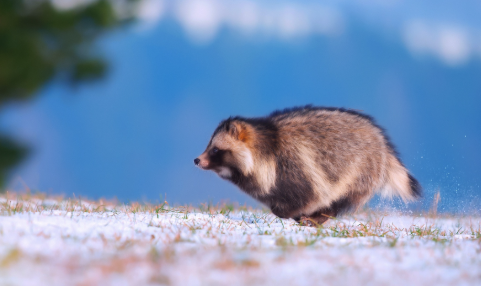While you may have seen exotic animals like pandas or white tigers at your local zoo, you might be surprised to know that there are a number of unique animals few people even know exist. Here are four cute animals that might surprise you.
Raccoon Dogs
These nocturnal animals live in the forests of eastern Siberia, northern China, northern Vietnam, Korea, and Japan. Although they may look like chubby raccoons, they are closer to foxes than raccoons. Raccoon dogs have long, thick fur and have curved front claws to help them climb trees and swim. They have poor eyesight, but they make up for it with their amazing sense of smell.
In Japanese culture, raccoon dogs are said to bring good luck. But don’t get too close to these curious but shy creatures, as they carry harmful diseases. For more information on raccoon dogs here.
Tree Kangaroo
There are 12 different species of tree kangaroos, and all are found on the New Guinea islands. What makes them different from regular kangaroos is they have long bushy tails that help them balance, climb, and maintain stability. Tree kangaroos can even jump from heights of 60 feet without getting hurt. They spend most of their days in the trees, and prefer to spend most of their time alone and only interact with each other during mating season.
Male tree kangaroos will often mate with multiple females during mating season, and females care for their young for about 18 months. For the first few months, joeys feed in their mother’s pouch and then move on to an herbivorous diet.
You can learn more about tree kangaroos here.
Sand Cats
They may look like cute house cats, but these cats aren’t domesticated, and they have some unique adaptations. Sand cats are slightly smaller than the typical house cat with bigger ears, padded feet, and unique fur. The fur on a sand cat is thick which helps it maintain heat at night, while becoming light and breathable in the daytime. These cats eat rodents, spiders, insects, and reptiles, and they can go for a week without water because they get their hydration from their prey.
Sand cats live for around 13 years and are found in Africa and Asia, specifically the Sahara desert, Arabian Peninsula, Turkmenistan, and Iran.
Baby Tarsier
Unlike the animals above, it’s difficult to find a baby tarsier in a zoo or the wild, as they are an endangered species. They live for about 16 years in the wild but are short-lived in captivity. Tarsiers are fragile creatures, and when captured, they will often bang their heads against the cages until they die. Even small disturbances can traumatize these animals, specifically loud noise, human touch, and bright lights.
Baby tarsiers are nocturnal and eat spiders, termites, beetles, and ants. They are hunted by snakes, lizards, and birds. One of their most unusual features is that they can turn their heads almost 360 degrees.
To learn more about baby tarsiers and their habitats, as well as other endangered species, go to Endangered Species International.






